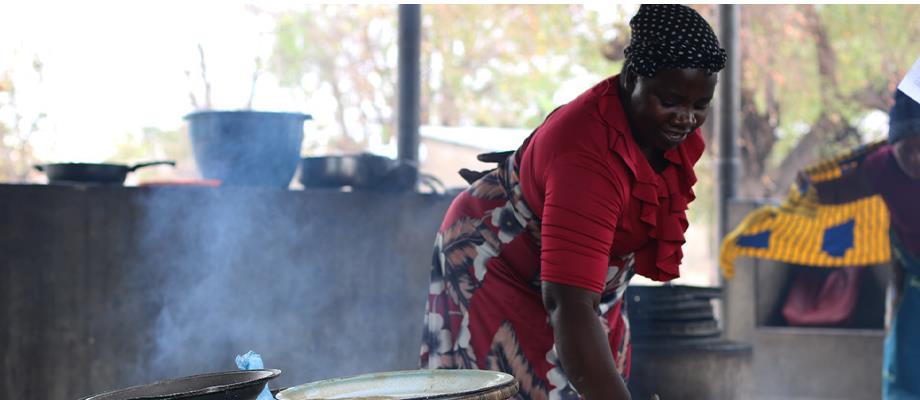Promoting fish recipes for better nutrition in Malawi

Despite the availability of fish in Malawi, fish consumption per capita is still low at 11.6 kg in comparison to the World Health Organization (WHO) recommended 17 kg. Fish, especially, small fish species offer a solution for increasing household protein intake and subsequently, the nutrition benefits at household level. Small fish is also nutritionally important, contributing essential nutrients, not only from the consumption of flesh, but also from fins and bones, which are eaten together.
To support increased consumption of fish, the Food and Agriculture Organization of the United Nations (FAO) is working collaboratively with the Government of Malawi to build capacity of nutrition promoters (community volunteers) to introduce new ways of preparing fish and to cascade recipes and nutrition knowledge to households within their respective communities.
The aim of these efforts is to increase the consumption of fish, with the aim of increasing the percentage of lactating women and children accessing the minimum acceptable diet and contributing towards reduced stunting levels among children under the age of five.
The capacity building is made possible with support from the Norwegian Agency for Development Cooperation under the Small-scale fisheries (SSF) project, which is aimed at supporting small-scale fishers especially women to increase their participation in the whole value chain.
“Protein-energy malnutrition levels in Malawi are still alarming and yet we have small fish species like Usipa that are readily available and cheap, that provide high quality protein. Fish recipes that make fish dishes more attractive will enable households in Malawi to enjoy more appetizing meals and will in turn increase fish consumption per capita, and improve the nutrition status of children and all members of the household,” said Chisomo Dambula, Nutrition Specialist from Department of Fisheries.
So far, 100 nutrition promoters have undergone nutrition training in the three SSF project districts of Mangochi, Salima and Karonga. Through the trained nutrition promoters, the initiative targets 1 188 households in four fishing communities, reaching out to approximately 5,346 community members with nutrition knowledge and fish recipes.
One of the 100 promoters trained is Doras Misi. She is a 42 years old mother of four and is a fish trader. Like many who live in her village of Nsumbi, she relies on fish for food and income security. Now armed with recipes for making fish balls, sausages, and porridge with fish among others she is confident that she can contribute positively to improved nutrition in her community.
“It was unimaginable for me that fish, especially small fish, could be processed into food products such as such sausages and fish balls. We have always had and used our traditional ways for preparing fish. Many thanks to FAO and government under the SSF project for organizing cooking demonstrations for care groups in our fishing communities. Through the training we have gained knowledge and skills on different ways for preparing fish,” says Doras Misi, a nutrition promoter in Mangochi district.
“The training will go a long way towards improving the utilization of fish and through various processing methods, the reduction in fish post-harvest losses. This will help to increase the percentage of fish available for human consumption and prolong shelf-life to support trading activities, said Amenye Banda, SSF Project Coordinator
This capacity building takes place at a time when the world is celebrating the international year of artisanal fisheries and aquaculture (IYAFA 2022), which recognizes the millions of small-scale fishers, fish farmers and fish workers who provide healthy and nutritious food to billions of people and contribute to ending hunger.
“The skills and knowledge gained from the training will make it easy for us go beyond our households. We can include fish powder in the food produced for children in the school feeding program. We can also use it in health centres when promoting good nutrition for pregnant and lactating women,” says Doras.
Other benefits which trainees cited included reduction of post-harvest losses during peak periods through the development of fish products with longer shelf life and income generation through sale of value added products such as fish sausages.
Learn more about the FMM project.

